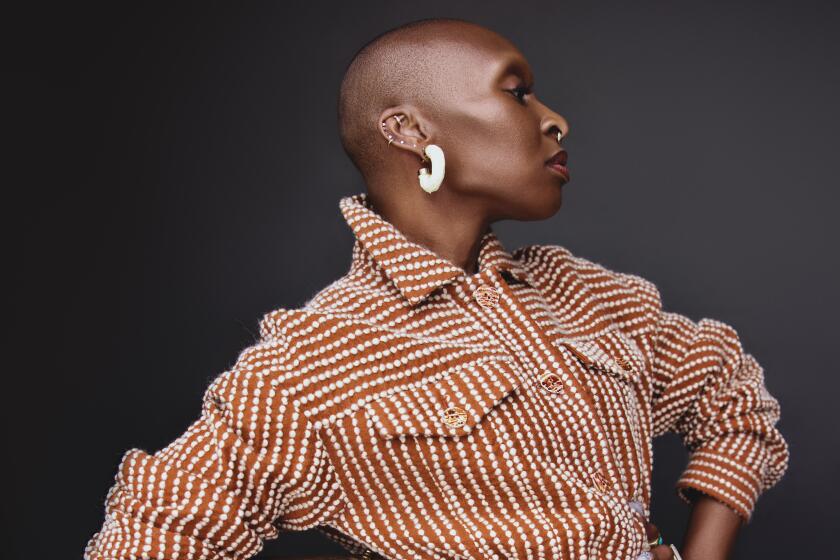An Old Shoe Box Is a Good Place to Save Snapshots
- Share via
If you’re feeling guilty because the family photographs you’ve been taking for years are in a shoe box in a closet instead of displayed in albums, relax. You may be doing the right thing to preserve the quality of your pictures.
Light and some of the plastics used to protect photos can damage them.
You can also be more certain your photos will be around for your great-grandchildren to see if you shoot in black and white.
“On almost every occasion, black-and-white photographs are more stable than color,” says Robert Aitchison, a Los Angeles art conservator.
“Color photographs are notorious for shifting and fading,” says Brooks Johnson, curator of photography at the Chrysler Museum in Norfolk, Va.
“If you went back and looked at pictures from the ‘50s or ‘60s, the color would have shifted so that there is an overall blue or yellow cast to them. That’s because the dyes used in making the papers and the negatives are not stable.”
“Manufacturers tell you the (papers and negatives today) are far superior to those products, and I’m sure they are,” Johnson says. “But we won’t really know until 30 or 40 years down the road.”
Long exposure to light can damage pictures of any kind.
“That’s especially true of sunlight, which is very bad for photographs,” says Aitchison. “It bleaches the color. If there’s any chemical reaction going on in the photograph, light can cause it to speed up and end up with staining or fading.”
To decrease exposure to light, conservator Nancy Reinhold frames her own pictures with ultraviolet-filtering Plexiglas she buys at plastic suppliers.
“That blocks out most ultraviolet rays, which are the most damaging,” says Reinhold, assistant conservator of photographs for the J. Paul Getty Museum.
Acidic paper or envelopes or poor quality plastic can also damage photos, so curators recommend buying those items from archival suppliers. Two such suppliers are Light Impressions of Rochester, N.Y., at (800) 828-6216, and University Products in Holyoke, Mass., at (800) 628-1912.
Shutterbugs far from museum stores or archival suppliers can make their own albums.
“Go to an art supply store and get 100% rag paper. That’s close to acid free,” says Arthur Ollum, director of the Museum of Photographic Arts in San Diego. “(Then) bind your album. Staple it or drill some holes and put some ribbon in it.”
That is if you want albums. “A lot of people feel they’ve got to get pictures out of shoe boxes in the closet and put them in albums. (Sometimes you’re) better off leaving them in the boxes,” Ollum says.
“The best place to store something is basically a cool, dry, dark environment away from bugs and pests, which can eat photos,” Aitchison says. “If you had an interior closet that wasn’t on an outside wall, away from sources of heat, water or bugs, that would be a decent place.”
Fluctuating temperature and humidity make attics and basements bad places to store prints, Aitchison says. Attics get hot and dry in the summer and basements are often cold and damp.
Conservators can often remove stains, smudges or warping from a picture, Aitchison says, but the work may be expensive. Unwilling to specify prices because they vary so much according to the job, Aitchison says a ballpark fee for extensive work on an old photograph would be “more than a plumber and less than a lawyer.”
Families can also preserve pictures by copying them. “Lots of photo stores can have that done for you,” Reinhold says. “If your photograph fades, you’ll be able to print another one from the new negative.
“It’s a good safety measure for a particularly loved photo; if you have only one picture of your grandmother, for example.”
Very old pictures “won’t look exactly the same because there were many different photographic processes in the 19th Century,” Reinhold says. “But you’ll have the image and information from long ago.”
Major Developments in Family Photography
1839: French stage designer Louis J. M. Daguerre makes an image on copper plated with silver. Invention reaches most major U.S. cities by late 1840s, allowing people to be photographed in a studio.
1888: George Eastman markets first Kodak camera. The push-button device containing film for 100 pictures sells for $25. The consumer takes pictures and sends the camera to a factory, which returns prints and camera with a new role of film. Now people without professional skill can take pictures at home.
1900: Kodak introduces first Brownie camera, which costs $1 plus 15 cents for a roll of film. Cheaper than the 1888 camera and mass produced, it enables more people to take snapshots.
1936: Kodak color-slide film allows families to take color pictures.
1939: Utility Manufacturing Co.’s built-in flash bulb eliminates need for flash powder and enables families to take indoor pictures.
1948: Polaroid Land camera goes on the market, providing instant prints.
1988: Several companies offer single-use disposable cameras for vacationers.
1992: Kodak introduces photo CD player. Photographers’ slides or 35-millimeter negatives are scanned onto compact discs for viewing on television.
More to Read
The biggest entertainment stories
Get our big stories about Hollywood, film, television, music, arts, culture and more right in your inbox as soon as they publish.
You may occasionally receive promotional content from the Los Angeles Times.










